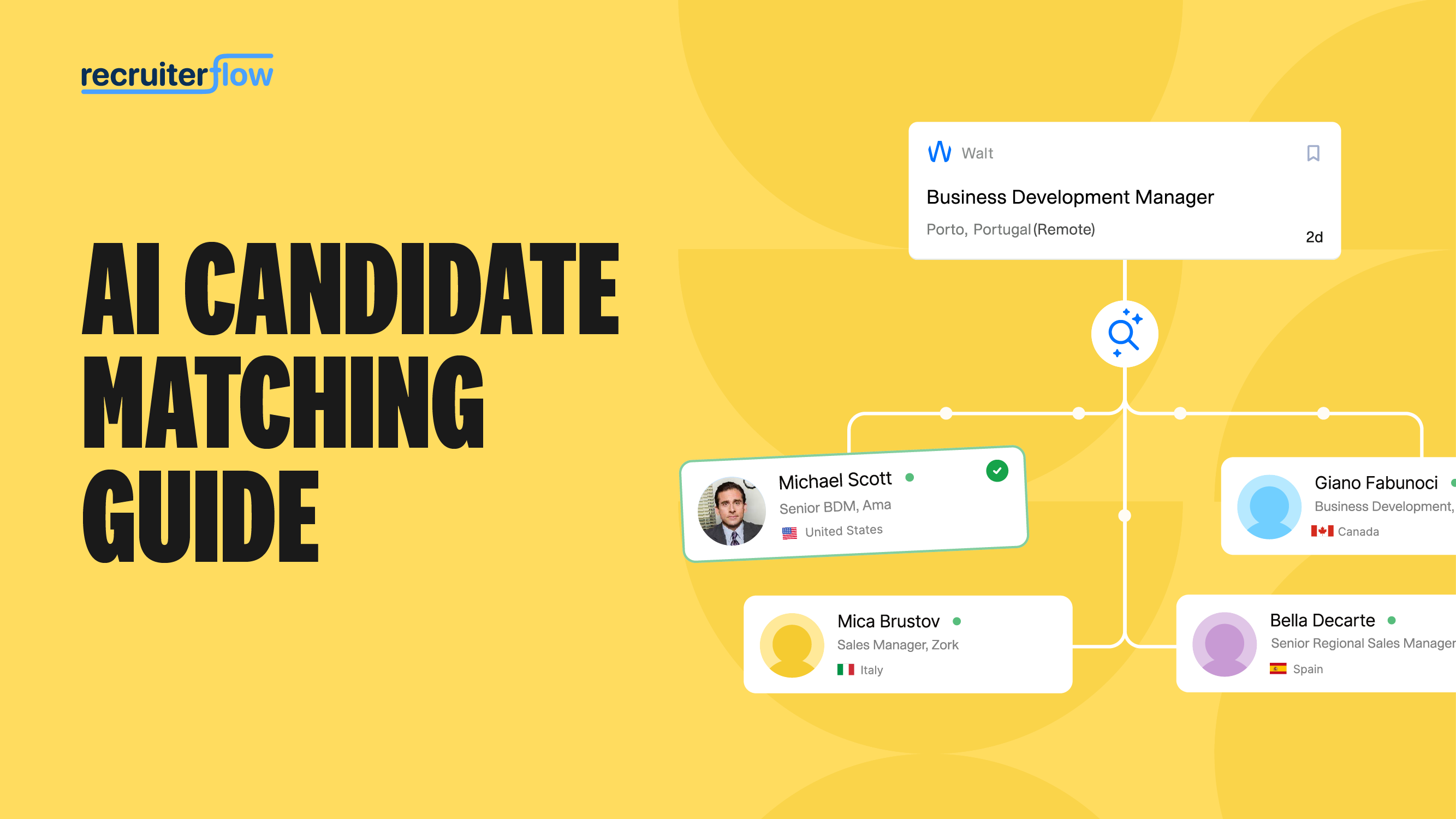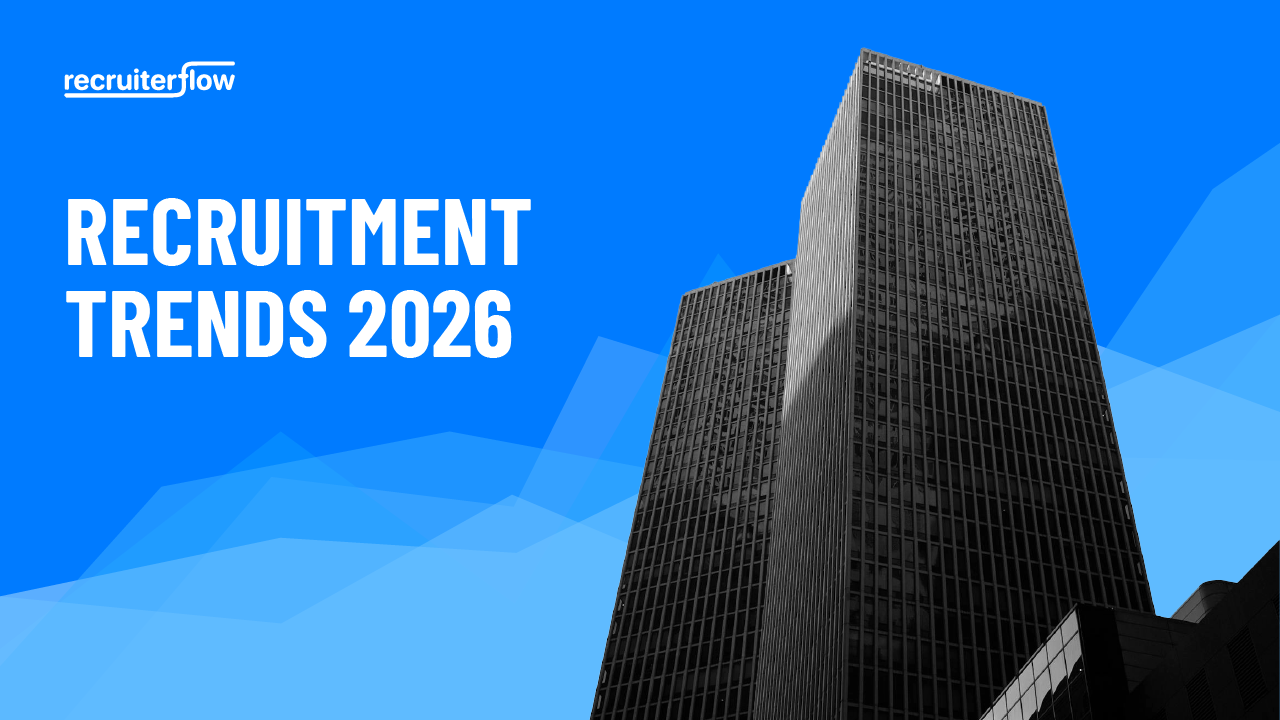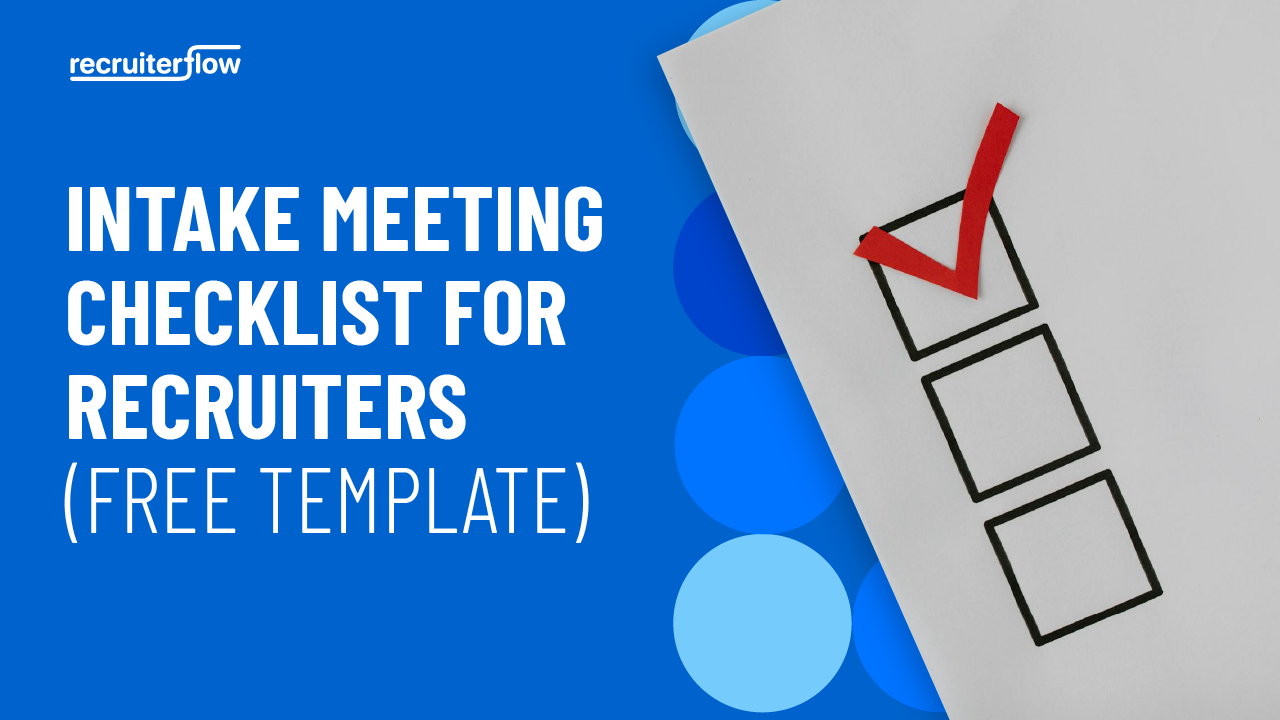
Diversity Recruiting: Importance, Strategies, and Tools
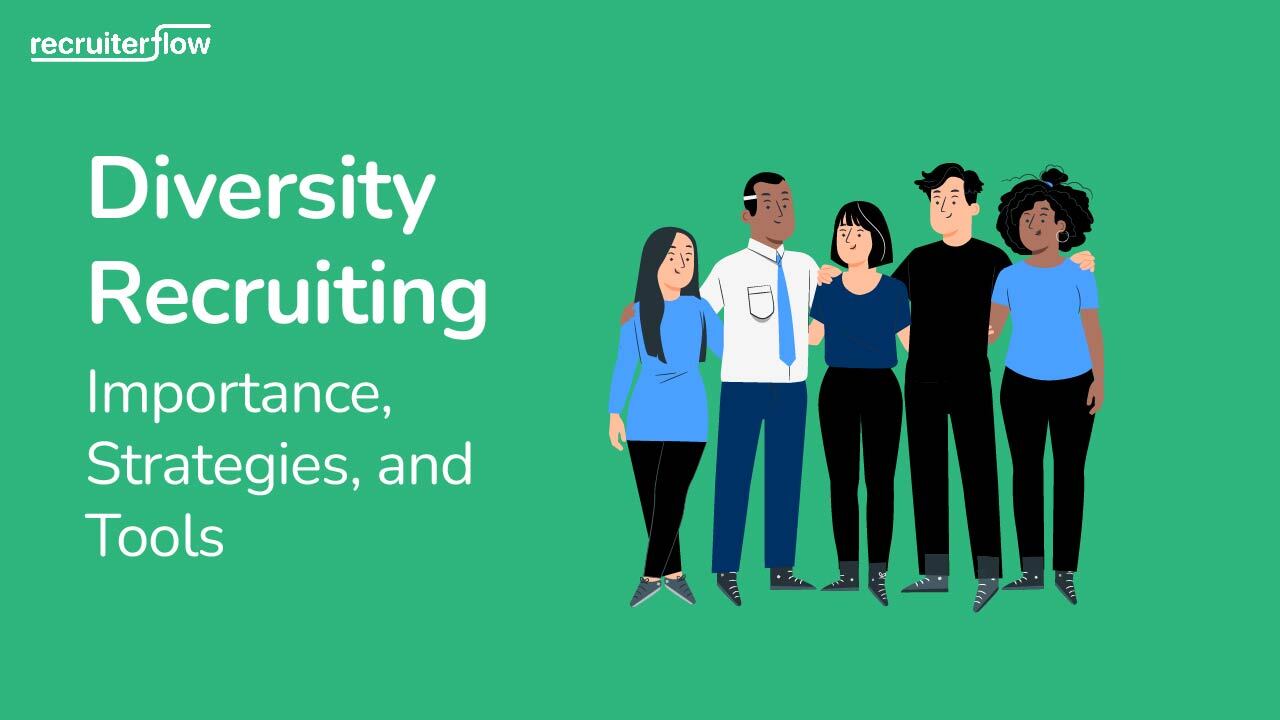
Diversity recruiting is more than just a compliance requirement—it’s a strategic business move. More importantly, it’s an initiative toward offering equal opportunities to candidates solely based on their skills, not on a preconceived notion about them.
About 70% of organizations from a survey have expressed some serious diversity, equity, and inclusion (DEI) aspirations, but less than half of them have the infrastructure to exercise them. There are far too many nuances to consider for practicing diversity such as intensive sourcing beyond the traditional places or eliminating unconscious bias from their recruitment process.
But guess what? Your recruitment agency can be their ally in promoting diversity and inclusion within their recruitment process. This article discusses the importance of diversity recruiting, along with strategies and tools that can help you attract and retain a diverse workforce.
What is diversity recruiting?
Diversity recruiting is a strategy aimed at creating a fair and inclusive recruitment process that values and seeks a wide range of backgrounds, perspectives, and experiences. It helps ensure that candidates are not judged based on age, race, gender, orientation, disability, religion, or any other characteristic irrelevant to job performance.
Some common diversity recruiting practices include:
- Blind recruiting
- Skills-based recruiting
- Inclusive job descriptions
- Bias-free screening
- Diverse sourcing channels
“What’s often ignored is that diversity is not only a pipeline or recruiting issue. It’s an issue of making the people who do make it through the pipeline want to stay at your company.”
– Andrea Barrica, CEO of O.school
Why is diversity recruiting important?
With diversity recruiting, you can help your clients build a culturally rich and inclusive workforce with each individual bringing a unique set of skills, knowledge, and life experiences. Such diverse teams foster broader problem-solving approaches, challenge existing practices, and drive better outcomes for an organization.
So, how does diversity recruiting impact an industry and the way job seekers perceive an organization?
- It closes the gaps related to gender, race, social status, and other criteria caused by traditional recruiting practices. This includes addressing pay gaps and introducing bias-free screening to encourage females or people of color to participate.
- It enhances your agency’s and client’s image, which helps you attract top talents. According to a survey, companies with diverse teams are 22% more likely to be seen as “an industry leader with high-caliber talent”.
- Job seekers value and appreciate companies that promote diversity. In fact, 76% of job seekers consider diversity an important factor to base their decision to accept a job offer.
- Bringing onboard a diverse workforce enhances your decision-making process about 87% of the time. This means diversity leads to smarter teams!
Current challenges with diversity recruitment
Diversity recruiting allows you to build a strong and talented workforce while eliminating discrimination. However, it’s still easier said than done as recruiters and hiring managers face tons of challenges around it.
Unconscious bias
Unconscious bias is when recruiters make implicit associations and judgments about candidates based on stereotypes, rather than objective information.
For example, studies show that resumes with traditionally white-sounding names get 50% more callbacks. So, when a non-white-sounding resume appears, a recruiter might be unconsciously activating stereotypes about socioeconomic status, educational background, or work ethic.
Lack of diverse networks
Recruiters often rely on their existing networks such as their LinkedIn connections or referrals to source candidates for a new requirement. When you do that, you’re limiting yourself to a homogenous talent pool that doesn’t include diverse candidates.
Symbolic efforts in promoting diversity
Most organizations only see diversity as a compliance activity. Especially since the Equal Employment Opportunity Commission (EEOC) has set regulations prohibiting discrimination, most of them are only making symbolic efforts in the name of diversity. They often hire a small number of diverse candidates to appear compliant without implementing meaningful changes.
This leads to half-hearted diversity initiatives that don’t truly drive change
Lack of diversity within recruitment teams
When recruitment teams themselves lack diversity, their perspective on hiring a diverse workforce would be limited by their beliefs too! For example, a homogenous recruitment team might unconsciously favor candidates with similar educational backgrounds as them.
Flawed recruitment methods
The traditional recruitment approach heavily relies on standardized tests, specific educational backgrounds, or narrow definitions of “cultural fit”. If you’re still practicing these notions, you may have been automatically neglecting diverse candidates.
For example, many autistic candidates may find traditional interview settings challenging due to difficulties with social interaction and communication.
Also, read our blog on DEI Interview Questions and Answers Recruiters Should Ask
8 strategies to recruit diverse candidates for your clients
When it comes to implementing diversity recruiting best practices, it’s important to tackle one problem at a time. You should ideally start by fixing your sourcing approach, followed by making your screening process bias-free and then conducting fair interviews.
Sourcing diverse candidates for your clients
The goal here is to expand and diversify your talent pool and consciously pick diverse platforms to source candidates.
1. Offer diversity recruitment training to your team
Change starts from home and in this case, your agency. Make sure your team understands the importance of diversity both for your organization and your clients.
Here’s how you can go about it:
- Start by setting realistic goals and expectations around what diversity should look like when recruiting candidates for clients.
- Bring in DEI experts to lead sessions and workshops for your team.
- Make sure that diversity recruitment principles are integrated into your company’s recruiting policies and procedures.
2. Source candidates from multiple diverse groups
Broaden your search for candidates by targeting the key areas where discrimination happens frequently. This includes:
- Gender: Gender gaps are still prevalent in many industries, as the current global labor force participation rate for women is just under 47%. Leverage diverse sourcing platforms and use gender-neutral language in the job descriptions.
- Race and ethnicity: In many industries and roles, people of color are still not adequately represented. To make meaningful change, it’s crucial to actively engage with institutions that serve minorities, like Historically Black Colleges and Universities (HBCUs).
- Neurodiversity: Candidates with conditions such as autism, ADHD, dyslexia, and Tourette’s often face barriers in traditional hiring processes. Actively seek out these candidates and tailor your recruitment approach to accommodate their needs.
For example, Microsoft runs a Neurodiversity hiring program where they source talented neurodiverse candidates and take them through a unique hiring process that focuses on workability, interview preparation, and skill assessment. - Other underrepresented groups: Groups with LGBTQ+, disabled, or older candidates can be given a fair chance with little thoughtful adjustments in your sourcing strategy.
“Many people on the autism spectrum excel in areas such as logic, technology skills, problem-solving, pattern recognition, precision, sustained concentration, analysis and other unique cognitive functions. Yet people on the autism spectrum are often overlooked for jobs that they might be brilliant at.”
Sir Richard Branson, founder of the Virgin Group
3. Write inclusive job descriptions
Job descriptions are an important decision-making factor for more than half of job seekers around the world. To make sure you appeal to a diverse set of candidates, try to make them as inclusive as they get!
Here’s how:
- Write clear and engaging job descriptions that reflect your brand’s essence and value.
- Use gender-neutral language and avoid mentioning any race or ethnicity.
- Highlight your commitment to diversity and inclusivity. Take inspiration from Manpower’s website.
Bonus: Inclusive job description template
Job Title: Customer Support Specialist
Location: Remote
Role Overview: We are looking for a Customer Support Specialist for a client in the HR-tech space. You’ll be the friendly face (or voice!) that their customers would rely on. Here are the skills we’re looking for:
Excellent communication skills – you’re a natural at connecting with people. A problem-solving mindset – you see challenges as opportunities. Team player attitude – you thrive in collaborative environments. Familiarity with customer support software? That’s a plus, but not a must!Why you’ll love this job:
Competitive Pay: We value your hard work and dedication.Flexible Work: Enjoy the freedom of remote work and flexible hours.
Growth Opportunities: We support your professional development every step of the way.
Inclusive Culture: Be part of a team that values and celebrates diversity.
Our Commitment to Diversity: At XYZ Recruiting, we are proud to be an equal-opportunity recruitment service. We make sure that our clients are committed to creating an inclusive environment for all employees.
Screening candidates to eliminate unconscious bias
Screening is a critical step of the recruiting process that often involves bias. This is when recruiters are more bound to make unconscious judgments based on candidate profiles and backgrounds.
Let’s explore how screening practices can be tailored to eliminate these biases.
4. Switch the traditional resume screening with talent assessment
Talent assessments are a great replacement for traditional resume screening. They focus on skills and competencies rather than personal details or qualifications that may disproportionately exclude certain groups.
They can be used to find candidates with shared values rather than similarities. Not to forget, this practice also allows you to get rid of barriers that keep diverse candidates out, such as strict requirements for college degrees or years of experience.
Here’s how you can use talent assessments as a diversity recruiting practice:
- Instead of just relying on resumes and shortlisting candidates based on their years of experience, use data to evaluate their skills. Start by creating pre-employment tests to gauge their cognitive abilities.
- Make sure the tests match the job requirements. For neurodiverse candidates, create tests that focus on their strengths, rather than their challenges.
- Use standardized candidate scoring criteria to compare candidates fairly and identify top performers.
You can also read our blog on recruitment best practices to enhance your hiring strategy.
5. Implement blind screening of candidates
This involves removing personally identifiable information from resumes and applications. Typically, you anonymize personal information such as names, gender, age, educational institutions, and even location.
Did you know?
Blind recruiting strategies make biases 3x less likely and nearly 50% of hiring managers support this idea.
Here’s an idea of how blind screening practices can work:
- Candidates submit their resumes and cover letters through your application portal.
- Your ATS automatically redacts their personal information even before your team has access to the data.
- Candidates complete a pre-screening test related to the role they’re applying for.
- You review the anonymized resumes and assessment results while focusing solely on skills, experience, and performance in the assessments.
You can also use a resume parsing tool to speed up this screening process and quickly identify candidates who meet the job criteria.
Remember, blind screening alone may not be sufficient to reduce bias. You need to implement other de-biasing strategies (such as conducting structured interviews) at other stages of the recruiting pipeline.
Implementing diversity recruiting in the interview process
Once you’ve shortlisted candidate based on their profiles and assessment results, it’s time to move them to the next stage i.e. interviewing and recruiting. This is the stage where your diversity strategies are truly tested. That’s because it involves human intervention where you and your clients both come into the picture to make the final hiring decision.
6. Conduct structured interviews
Interviewing can often be associated with biases related to intuitions and feelings. For example, an interviewer might unconsciously take the interview in a different direction based on “gut feeling” and first impressions.
This leads to biased evaluations that unfairly favor certain candidates over others due to irrelevant factors such as their appearance, mannerisms, or personal rapport with the interviewer.
Here’s the thing: interviewers cannot let their “first impressions” about a candidate impact their decision. There’s obviously more to the candidate than how they conducted themselves in the first interaction. The key is to plan the interview in advance, instead of just “going with the flow”!
The solution? Structured interviews where you ask candidates a set of predetermined questions and evaluate their responses using a consistent scoring system.
Bonus Resource
Here’s a great template to create structured interview questions for your next recruiting process: Sample structured interview questions
Here’s how to implement it:
- Create questions that directly relate to the skills and competencies required for the job. Behavioral questions (e.g., “Tell me about a time when…”) are particularly useful here as they focus on past experiences and actions.
- Train your interviewers to ensure they understand the structured interview process and follow through.
- Assemble a diverse interview panel to bring unique perspectives from different backgrounds, experiences, and identities to the table. Such panels can help make candidates from underrepresented groups feel more comfortable.
- Develop a rating system to define what constitutes a high, medium, and low rating for each question.
- Stick to the interview structure. Avoid deviating from the script to maintain consistency.
7. Promote diversity values to your clients
Has this thought ever crossed your mind that not all your clients might be as passionate about diversity as you are? While you possibly cannot change everyone’s perspective and priorities, you can still encourage your clients to follow the best practices and use diversity hiring as a retention strategy.
Here’s how you can push this idea forward to your clients:
- Advocate for the creation of inclusive work environments where all employees feel valued and respected. Highlight the benefits of diversity, such as increased creativity, better decision-making, and improved employee morale.
- If your clients are overseeing the interviewing and recruiting part, make sure you equip them with the necessary tools and techniques to reduce bias.
- Share examples of successful DEI programs from leading companies. For example, Google runs a ‘Stay and Thrive’ program for underrepresented communities, where they assign case managers to employees considering leaving the company. It also promotes ‘Pathways to Sponsorship’ programs, which give women and minorities access to mentorship and networking opportunities.’
- Help clients incorporate diversity and inclusion into their corporate messaging and values.
- Encourage your clients to talk about diversity and inclusion on their social platforms.
Show them the example of BCG hiring a Chief Diversity Officer as their voice for diversity, equity, and inclusion internally and externally.
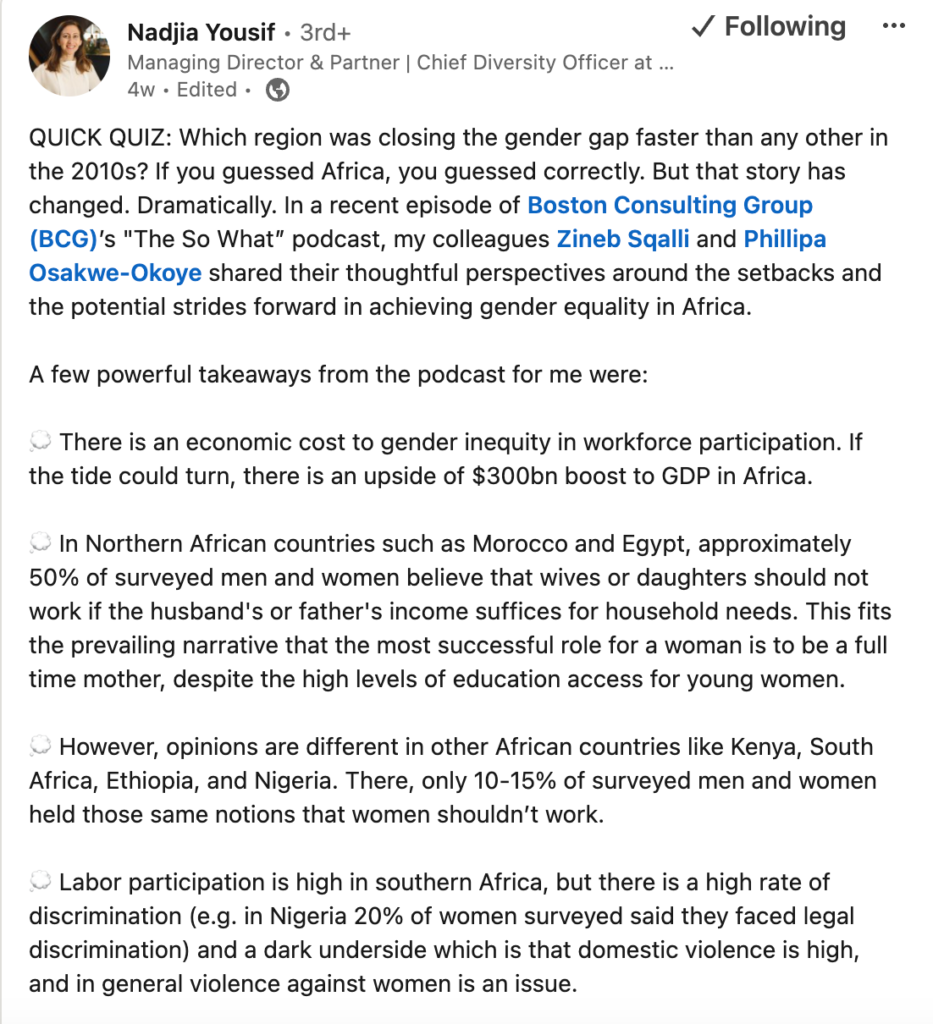
8. Measure your DEI efforts
When you have applied every best diversity recruiting strategy by the book, don’t forget to measure its impact. You can do this by measuring the following diversity metrics to track your DEI efforts:
- Workforce diversity: Ask your clients to give you a general breakdown of their staff demographics related to race, gender, age, ethnicity, and other factors. Analyze the distribution of different demographic groups across various levels of your organization (entry-level, mid-level, senior positions).
- Sourcing platforms: This is something you and your team can answer. Identify where your candidates are coming from (e.g., job boards, social media, referrals, recruitment agencies) and what’s the percentage of traffic from each source.
- Candidate experience: This metric itself tells a lot about how diversity-friendly your recruiting process is and how candidates feel about it.
- Retention rate: Connect with your client to understand how your DEI efforts impacted their retention rate. This tells you how happy and satisfied their employees are with the way inclusion is practiced in the organization.
- Pay equity: Compare salaries across different demographic groups (e.g., gender, race, ethnicity) for similar roles. This will help you identify pay gaps between those demographics.
Examples of recruiting agencies with solid diversity recruiting strategies
Here’s how a few leading recruiting agencies have embraced the values of diversity and inclusion within their organizations:
1. Randstad’s Sourceright Talent Innovation
Randstad’s Sourceright Talent Innovation Center staffs a team of over 30 experts in talent strategy, technology, and analytics from around the globe. They’re dedicated to developing cutting-edge approaches to various aspects of recruitment, including employer branding, talent experience, and sourcing and recruiting strategies.
Moreover, they focus on integrating a contingent, freelance, or temporary workforce, ensuring that these non-traditional work arrangements also benefit from inclusive recruitment practices.
2. Adecco’s “CEO for One Month” program
Adecco Group’s “CEO for One Month” program is a unique initiative designed for young leaders from underrepresented backgrounds. It aims to provide them with invaluable experience and exposure to senior executive roles by assigning them to work alongside executives.
This is not only a great initiative for promoting diversity but also for building a pipeline of future leaders who are well-versed in executive management.
3. Manpower’s INCLUDE program
ManpowerGroup has achieved a high Diversity and Inclusion rating of 4.1 out of 5 stars on Glassdoor. A cornerstone of this commitment is the INCLUDE program, which is designed to build a robust pipeline of diverse leaders.
It’s both an internal initiative and a service offered to clients that enforces Diversity, Equity, Inclusion, and Belonging (DEIB) through comprehensive training and development sessions.
7 diversity recruiting tools to optimize your diversity recruiting efforts
Ensuring diversity can be a hectic responsibility and manually handling recruiting tasks might not be the best idea.
First, there’s a high chance of burnout that comes with managing too many candidates at a stretch. There are several recruitment tools that can handle many of these tasks at a faster rate.
Secondly, unconscious biases tend to happen more often with manual recruitment. Your mood, or thought process at a given moment could influence your actions when assessing candidates.
Here are some top-notch recruiting tools that can help you recruit diverse candidates:
1. Recruiterflow: Resume screening and parsing
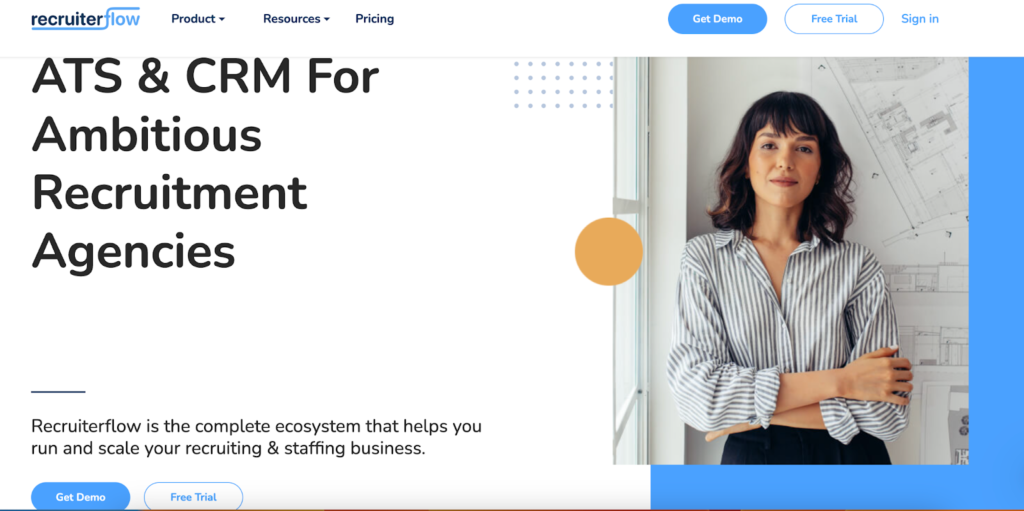
Recruiterflow is a complete suite of recruitment tools you’ll ever need to automate redundant tasks from your recruiting process. With features like automated resume parsing, it analyzes resumes and candidate profiles for you and arranges information in a readable format. Additionally, it creates branded & submittal-ready resumes and allows you to automatically redact information from the resumes before sending them to your clients.
This way, you can ensure a bias-free screening of resumes both from your end and your client’s end.
Key features:
- Resume parsing and reformatting
- Automated email sequencing
- Easy integration with other diversity recruiting tools like SourceWhale and Seekout
Pricing: Starts at $99 per month per user
2. SourceWhale: Headhunting and sourcing
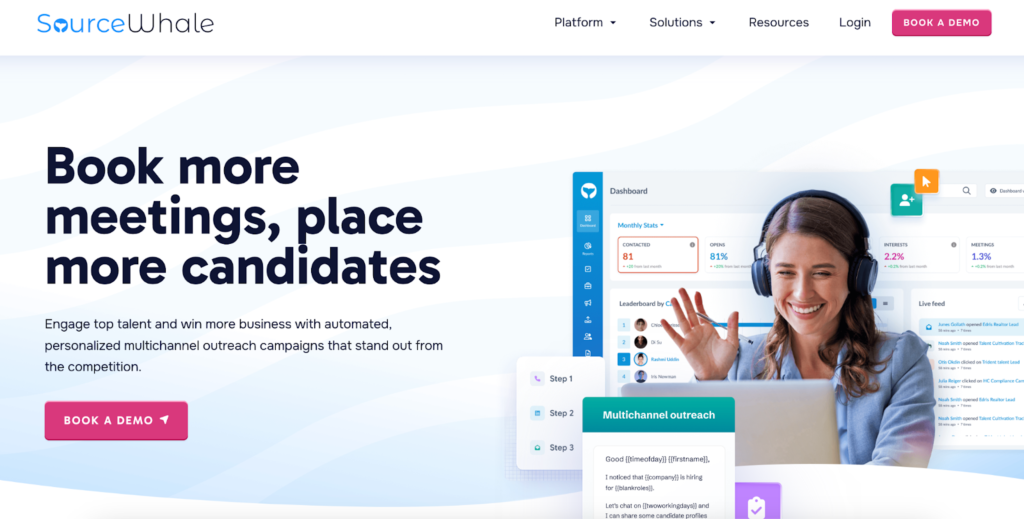
SourceWhale is a headhunting platform that simplifies the sourcing process for you. It automates sourcing and outreach across various channels and makes it easier to connect with top talent.
You can specifically track the number of female, ethnically diverse, and non-binary contacts you’re reaching out to. The platform predicts this using candidate’s first and last names, their pictures, pronouns, and such pieces of information.
Moreover, its integration with Recruiterflow allows for easy sourcing and screening from one platform itself, without having to change screens.
Key features:
- Diversity tracking
- Integration with Recruiterflow
Pricing: Custom
3. Seekout: Talent search engine
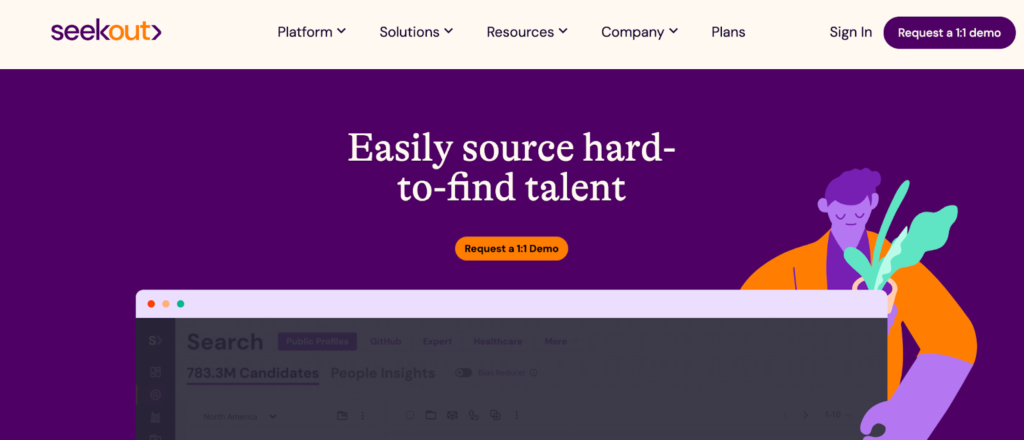
Seekout is an AI-powered talent search engine where you can find a diverse pool of candidates. It tracks representations across your talent pools and discovers talent from underrepresented groups using advanced search and diversity filters.
Its integration with Recruiterflow allows you to export data from Seekout and turn them into profiles complete with contact information and work/education history.
Key features:
- Advanced search and diversity filters to source unique talents
- Easy integration with Recruiterflow
Pricing: Custom
4. TestGorilla: Talent assessment platform
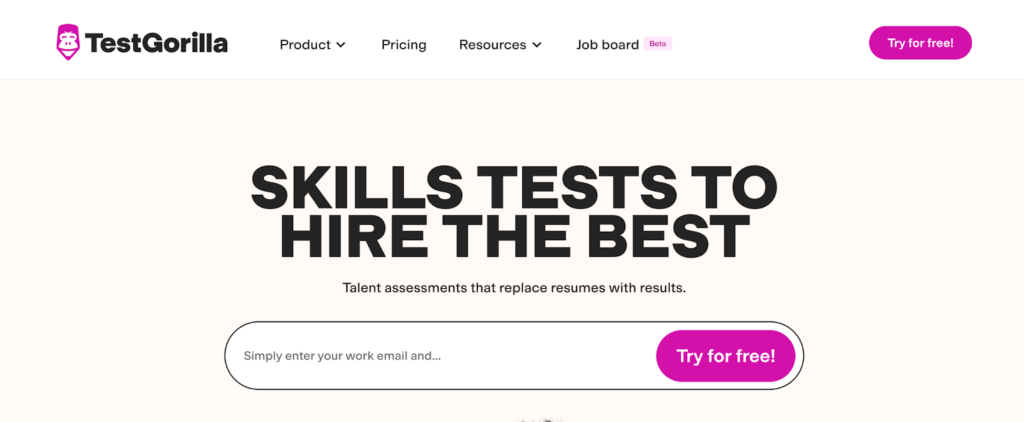
TestGorilla has a vast library of tests that helps you assess your candidates based on job-specific skills such as C# programming, or social media management. They also offer culture add and soft skills tests to help you assess candidates based on culture fit and their personality,
Key features:
- 400+ tests developed by 15 specialists with 12 PhDs
- ATS integration using API
Pricing: Starts at $0 per month with 5 tests free
5. Pymetrics: Gamified soft skills assessment
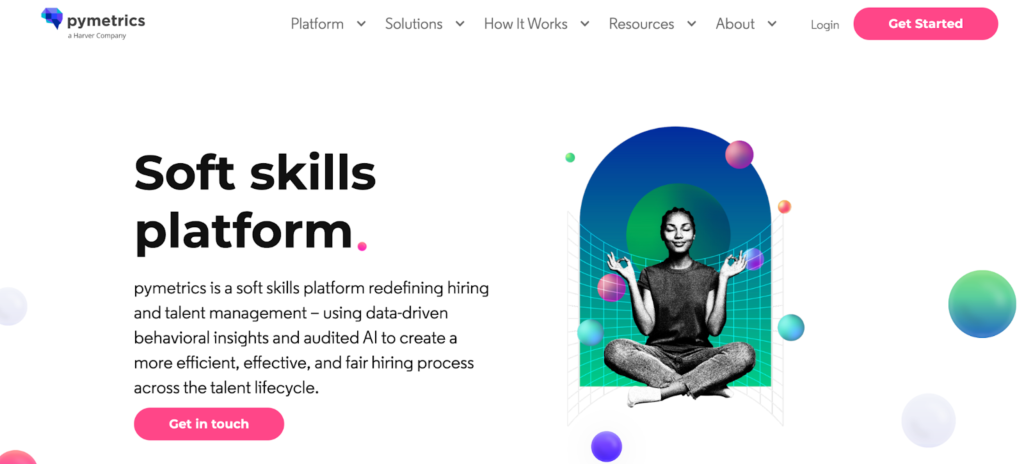
Pymetrics specializes in developing neuroscience gaming assessments for bias-free recruiting. Using these assessment results, the software predicts and matches candidates to suitable roles aligning with their skills.
They have their own database of high-scoring candidates who performed well in their various behavior-based games.
Key features:
- Assess candidates using objective cognitive and behavioral data
- Allows you to build custom algorithms based on your recruiting goals
Pricing: Custom
6. Textio: Job description writing
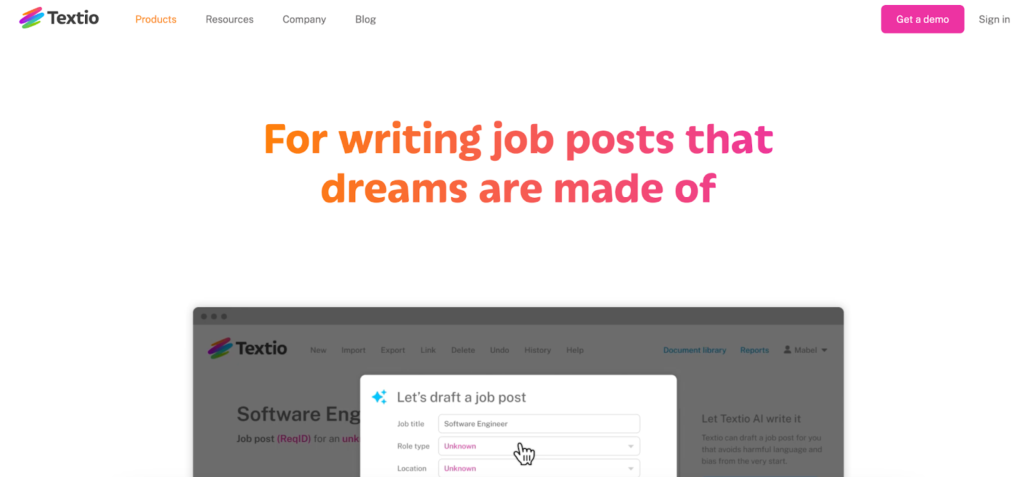
Textio is a writing platform designed to create unbiased job posts. Powered by a unique database of 350 million job ads, it helps you craft inclusive content by filtering language and offering real-time AI-driven recommendations.
It highlights gendered language from your job posts and guides you to use more neutral terms.
Key features:
- Generated branded job posts
- Grades every job post to predict who will apply
Pricing: Annual subscription starts at $15k
7. Diversity Jobs: Job board with diverse candidates
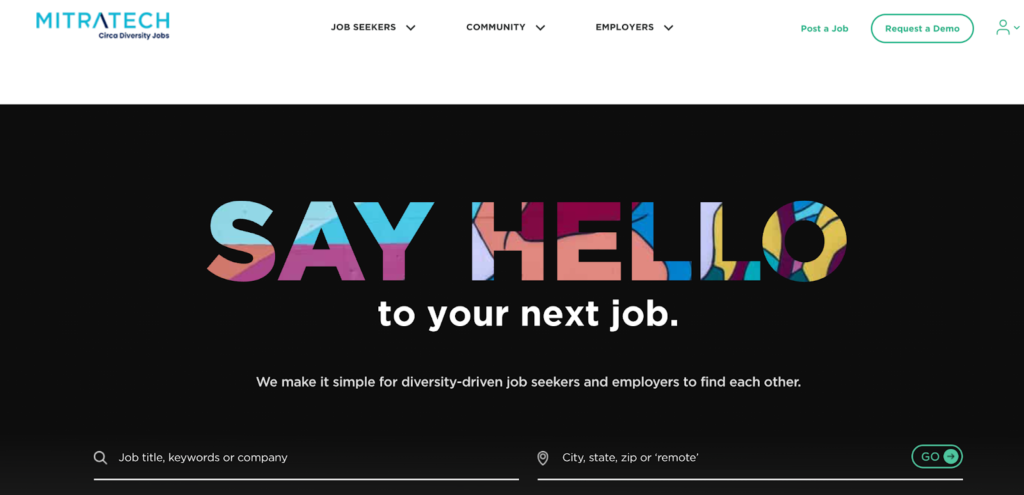
Diversity Jobs aims to connect diverse candidates with companies valuing diversity. Diverse candidates such as people of color, women, veterans, older workers, individuals with disabilities, and members of the LGBTQIA+ community create their profiles here, which makes it easy for recruiters to find them.
Key features:
- Branded job postings
- Targeted marketing to amplify your search
- Integration with Google to highlight job postings
Pricing: 30-day job posting plan at $295
Ready to smash your diversity recruiting goals?
Diversity recruiting is the first step toward building an inclusive workforce from different diverse groups. Such teams not only bring fresh ideas and perspectives to the table but also enhance creativity and boost the overall company performance for your clients.
By helping your clients hire such talented individuals from diverse groups, you’re driving innovation and promoting equality in the workforce. Essentially, you’re contributing to making the world a better place to live in and work!
With an ATS like Recruiterflow, you can integrate the essential diversity recruiting tools and supercharge your recruiting efforts.


